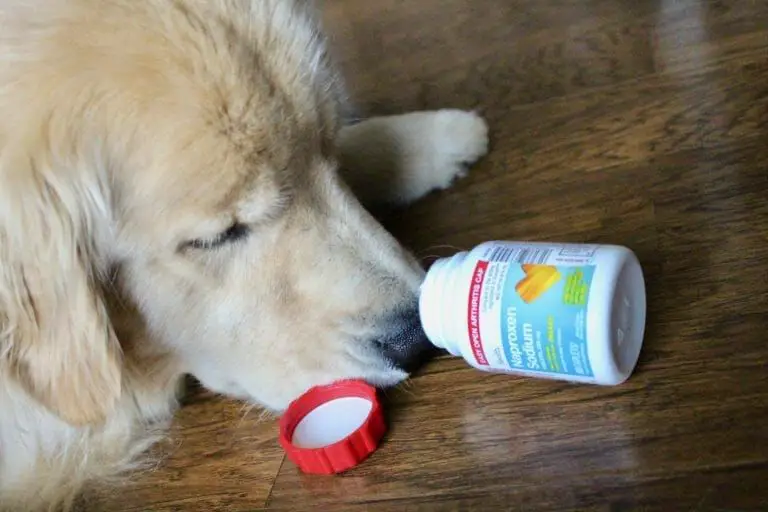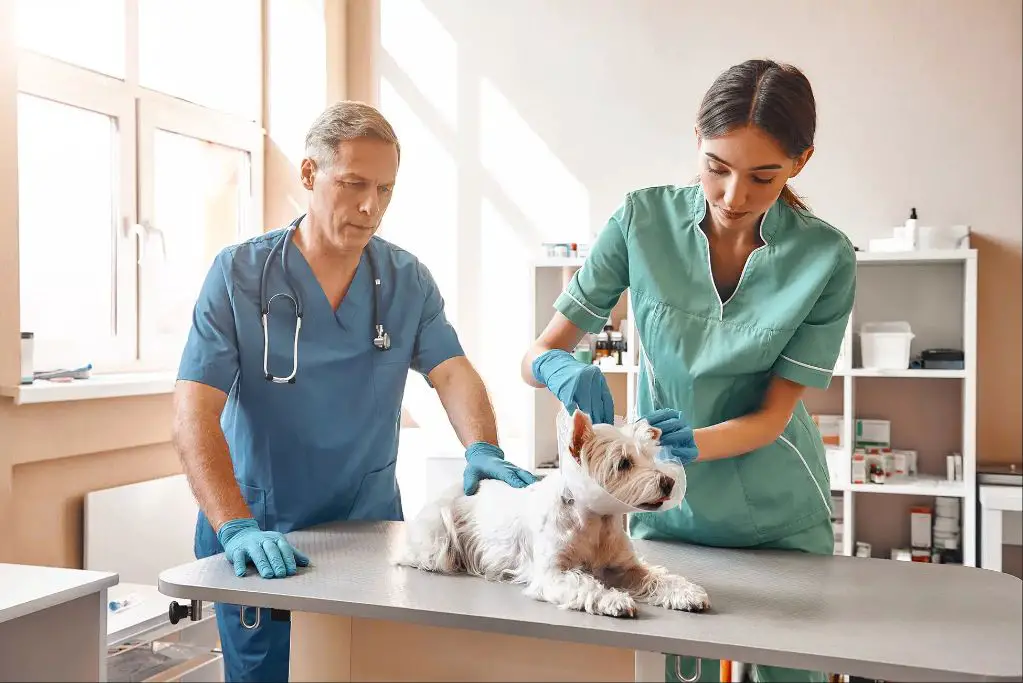Assess the Wound
If a dog bites you and breaks the skin, the first thing to do is assess the wound. Look closely at the size, depth and location of the bite. Note if any tissues like muscle or fat are torn or if any bones are exposed. Bites that are large, deep, and affect sensitive areas like the face, hands or genitals are of greatest concern. Small, superficial bites may not require immediate medical care. But it’s still important to thoroughly clean any dog bite wound to help prevent infection.

Stop the Bleeding
If the dog bite has caused your skin to bleed, it’s important to stop the bleeding as soon as possible. Apply firm, direct pressure to the wound with a clean cloth or piece of gauze. Maintain steady pressure for at least 5-10 minutes to give the blood a chance to clot. If the bleeding is on an arm or leg, elevate the limb above the level of your heart. This will help reduce blood flow to the area. Once the bleeding starts to slow, you can wrap the wound with a bandage or sterile dressing. Make sure it’s snug, but not tight enough to restrict blood flow. Keep checking the bandage for fresh bleeding. If it bleeds through, don’t remove it – just add more layers of gauze and continue applying pressure. The key is consistent, firm pressure until the bleeding fully stops.
Clean the Wound
After a dog bite that breaks the skin, it is crucial to properly clean the wound to help prevent infection. The first step is to wash your hands thoroughly with soap and water. Then, rinse the bite wound under running water for at least 5 minutes to help flush out dirt, debris, and bacteria. Avoid using hydrogen peroxide or alcohol, as these can damage tissue.
Use mild soap and warm water to gently clean around the wound. Do not scrub hard or attempt to brush debris from a deep puncture wound, as this can cause more harm. Thoroughly rinse away all soap residues after washing. You may need to irrigate deeper wounds with sterile saline solution. Cleaning should remove any visible dirt and debris in order to help prevent infection, but take care not to cause additional trauma to the wound tissues.
Proper wound cleaning is an important first step after a dog bite. Always use fresh, clean water and mild soap without scrubbing too harshly. Rinsing thoroughly afterward is key. If you have questions about how to best clean a bite wound, consult a healthcare professional.
Watch for Infection
Dog bites that break the skin are at risk of infection. It’s important to monitor the wound in the days following the bite and watch for signs of infection. Look for redness, swelling, oozing, increased pain, and warmth around the wound. Take your temperature at least once daily and watch for fever, which could indicate infection. See your doctor right away if you notice any of these signs of infection.
An infected dog bite needs medical treatment. Your doctor may prescribe antibiotics to treat the infection. Leaving an infected bite untreated can allow the infection to spread deeper into tissues and the bloodstream, becoming serious very quickly. Seek prompt medical attention for infection to avoid complications like permanent injury, scarring, blood poisoning, or the spread of infection to the bones, joints, or blood.
Get a Tetanus Shot
If the dog’s teeth broke your skin, be sure to get a tetanus booster shot if it has been over 5 years since your last tetanus vaccine. When a dog bites, its teeth can introduce tetanus bacteria into the wound. Tetanus lives in soil, dust and manure and can enter the body through any break in the skin. It releases a toxin that can cause painful muscle spasms, breathing difficulties and lockjaw. Tetanus kills about 1 out of 10 people who are infected.

The tetanus vaccine provides long-lasting protection against the tetanus toxin. Adults should get a tetanus booster shot every 10 years. If your wound is deep or dirty and your last tetanus shot was more than 5 years ago, your doctor will likely recommend a booster to prevent tetanus infection.
See a Doctor
If the dog bite broke the skin, seeking medical care should be a top priority. This is especially important for deep puncture wounds or bites to the face, hands, or genitals. Such severe bites have a higher risk of infection and may require antibiotics, stitches, or plastic surgery.
Seeing a doctor allows for professional wound cleaning to remove debris, disinfect the area, and properly dress the injury. They can also assess if stitches or skin glue are needed to close the wound. For deep bites, imaging tests may be done to check for underlying damage to tendons, muscles, nerves or bone.
It’s crucial to get prompt medical attention to lower the chances of complications like rabies, tetanus and dangerous infections. Don’t wait to see if symptoms worsen. The sooner treatment begins after a dog bite, the better the outcome typically is.
Pain Management
If the dog bite wound is causing you a lot of pain, there are several ways you can manage the pain at home without the need for prescription medication.

One option is to take over-the-counter (OTC) pain relievers like acetaminophen (Tylenol) or ibuprofen (Advil, Motrin). Follow the dosage instructions on the bottle and do not exceed the recommended amount.
Applying cold compresses to the bite area is another way to reduce swelling, pain and inflammation. Wrap some ice cubes or a cold pack in a towel and apply it to the wound for 10-20 minutes a few times per day. Be sure not to apply ice directly as it could damage the skin.
Elevating the injured area, such as keeping your hand or arm raised above the level of your heart, can also help minimize swelling and throbbing. Try to keep the wound elevated whenever possible in the days following the dog bite.
Getting plenty of rest allows your body to heal, so take it easy until the worst of the pain subsides. Limit use of the injured hand or body part as much as you can.
Avoid Using Hand
If your dog bite is on your hand or finger, it’s crucial to immobilize the hand to prevent any further injury while it heals. This reduces the risk of complications and allows the wound to properly recover.
Use an over-the-counter finger splint or make one yourself to keep the bitten finger or hand stabilized. Wrap with gauze or an ace bandage to secure it in place. Keep the hand elevated on a pillow when possible to help reduce swelling and throbbing. Change the dressings regularly.
Avoid using the injured hand for daily activities like typing, writing, or gripping objects. This constant movement can disturb the wound and interfere with proper healing. Reduce dexterity exercises and finger stretching which can place strain on bite lacerations.
Take care not to knock or bang the immobilized hand to prevent aggravating the injury. Handle the hand gently and cautiously. You may find using your non-dominant hand for tasks awkward at first, but protecting the bitten hand is vital.
See your doctor regularly during recovery for wound checks and to ensure proper healing. With rest and care, your hand should recover well. But diligent immobilization now prevents lasting complications from dog bites.
Watch for Complications
Dog bites can sometimes lead to complications, so it’s important to monitor the injury carefully and seek emergency care if certain symptoms develop. Pay close attention if the bite is located near the eyes, throat, or joints as these sensitive areas are more prone to complications. Also watch for signs that an infection is spreading from the bite such as redness, swelling, increased pain, fever, or pus/discharge coming from the wound. Seek emergency medical care right away if you notice any of these warning signs. Complications like infection into the joints, bones, or blood (sepsis) require urgent treatment with intravenous antibiotics and possible surgery. Don’t wait to see if symptoms improve on their own. Getting prompt medical attention gives you the best chance of treating a serious infection before it spreads.

Report the Bite
If a dog bites and breaks the skin, it’s important to report the incident to animal control or local authorities. Here are some tips on reporting a dog bite:
Contact animal control and file a report. Provide details like the date, time, location of the bite, name and contact details of the dog’s owner if known, and a description of the dog (breed, color, size, etc). The report creates a record of the biting incident.
Ask animal control to follow up with the dog’s owner. They can check if the dog’s rabies vaccine is up to date, inform the owner of quarantine procedures, and take any necessary action if the dog exhibits aggressive behavior.
Request documentation and keep records. Get a copy of the animal control report for your records. Follow up to get test results if the dog will be tested for rabies. Maintain documentation in case you need to provide proof of the incident later.
Consider legal action if warranted. If the bite was severe, or if the owner was negligent in controlling their dog, you may want to explore legal action. An attorney can advise you on steps to take to potentially recover damages from the dog owner.
Reporting bites helps protect public health and safety. Unreported bites allow irresponsible owners to avoid repercussions, while reported bites establish critical records that animal control uses to identify dangerous dogs and negligent owners.